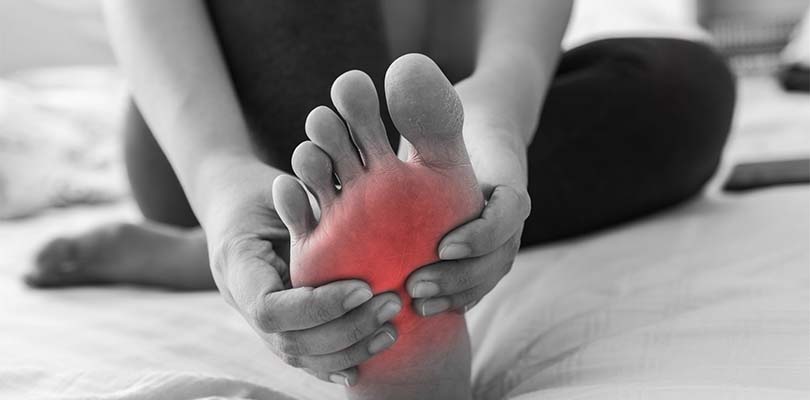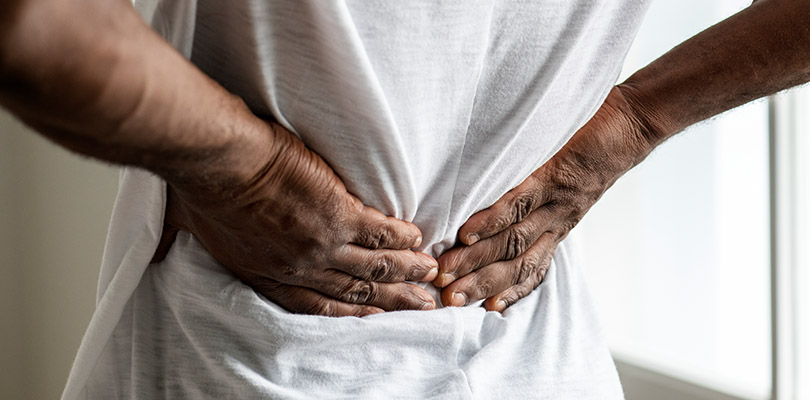Dealing With Rheumatoid Arthritis and Pain
For rheumatoid arthritis sufferers, the pain in the joints of the body can be debilitating. There are several reasons why the pain occurs and a few different options for easing the inflammation in your joints.
What Is Rheumatoid Arthritis Pain?
Rheumatoid arthritis affects the lining of your joints, causing painful swelling which can lead to joint deformity and bone erosion. With rheumatoid arthritis, your joints feel tender, warm, and stiff. Rheumatoid arthritis affects the smaller joints first, like your fingers, and as the disease progresses, your symptoms can spread to other joints in the body.
As an autoimmune disease, symptoms can also include fatigue, fever, and weight loss. Symptoms vary in severity and go through both periods of flares and remission, where the swelling and pain seemingly fade away. It is considered a flare when your rheumatoid arthritis symptoms get suddenly worse with increased joint pain, joint swelling, and fatigue, and these symptoms last for a period of about three days.
Causes of Rheumatoid Arthritis Pain
Rheumatoid arthritis is a chronic inflammatory disease and pain can come from a variety of reasons, so it is helpful for treatment to learn the cause of your pain. Causes include:
Synovitis
Synovitis is likely the initial reason for your joint pain. This starts when your immune system attacks the lining of the membrane around your joints. The body sends leukocytes (white blood cells) to the area to protect the body. White blood cells usually attack viruses, but in its confused state, the body directs the leukocytes to damage the synovium instead.
The inflammatory chemicals and inflammation of nerve fibers is the presumed cause of pain in most rheumatoid arthritis cases. The inflammation thickens the synovium, and given enough time, it can destroy the cartilage and bone inside the joint.
Joint Misalignment
The tendons and ligaments that hold the joint together weaken and stretch over time. This causes the joint to lose its shape and alignment, introducing pain when the joint doesn’t move properly.
During an arthritis flare-up, symptoms become severe. But what causes arthritis flare-ups? Here are the common triggers and how to avoid them.
Muscle Wasting
In order to accommodate rheumatoid arthritis limitations, muscle wasting will happen in many patients. Abnormal use of the muscles to work around the joint pain (and remove excess strain), or not using certain muscles due to a brace will cause some muscles to lose strength. Weak muscles may not perform properly and increase the likelihood of pain or injury.
Secondary Osteoarthritis
Prolonged inflammation from rheumatoid arthritis in individual joints may lead to joint damage and secondary osteoarthritis. Permanent cartilage and bone damage may be the result of injured joints. This is called secondary osteoarthritis because it is the result of rheumatoid arthritis and not the usual wear-and-tear cause of osteoarthritis.
Causes of Painful Rheumatoid Arthritis Flare-Ups
- Infection. Rheumatoid arthritis medications suppress the immune system, which can invite infections into the body. Colds and flus may trigger rheumatoid arthritis flares.
- Stress. Periods of high stress can trigger flares.
- Fatigue. Overextending yourself may trigger a rheumatoid arthritis flare. Fatigue is the result of both physical, mental, and emotional factors. Certain chemicals, called cytokines, promote inflammation and cause fatigue in people with rheumatoid arthritis.
- Certain foods. Some foods can be responsible for triggering flares. These foods differ from person-to-person and it is speculated that these flares may be related to an allergy or food sensitivity. Keep track of your food for a while to see what you eat prior to a flare-up. Removing those foods from your diet may reduce symptoms and future flare-ups.
- Pregnancy. Being pregnant turns off the immune system and usually causes a reduction in rheumatoid arthritis symptoms. Months after giving birth are frequently a trigger for a rheumatoid arthritis flare due to the changes that occur in the body.
Treatment for Rheumatoid Arthritis and Pain
Since rheumatoid arthritis and pain can be caused by different things, it means there isn’t a blanket treatment for relieving the pain. Even in an individual patient, the pain in some of their joints may be caused by something else in other joints affected by rheumatoid arthritis.
There are combinations of rheumatoid arthritis and pain treatment out there which include non-drug therapy and drug therapy options. For severe cases of rheumatoid arthritis, joint replacement surgery or surgery to remove inflamed tissue may be an option.
Non-Drug Therapy
There are several practitioners that can advise you for treatment options for non-drug therapy: Occupational therapists can provide splints and offer advice on how to work around joint pain, podiatrists can help with feet issues, and physiotherapists can suggest exercises to strengthen the affected areas.
You have at-home options for non-drug therapy as well, which includes:
- Resting the joints throughout the day
- Applying heat or cold to painful joints—hot showers or baths, a cold compress, etc.
- Using a splint to reduce pain
- Using a walking stick or cane for knee or hip joints
- Wearing cushioned-soled shoes and arch supports can help foot pain
- Doing forearm exercises to keep your muscles strong and reduce hand pain or leg raising exercises to help manage knee pain
- Eating well and giving your body the nutrients it needs to fight fatigue
Drug Therapy
Medications for rheumatoid arthritis may include non-steroidal anti-inflammatory drugs (NSAIDs) and disease modifying anti-rheumatic drugs (DMARDs). These medications help with pain and inflammation; however, it is rare that one drug will relieve all arthritis pain for one person.
Common medications for rheumatoid arthritis patients are paracetamol, NSAIDs, corticosteroids, opioid analgesics and combinations of these drugs. Corticosteroid injections to inflamed joints quickly relieve pain, but there are limitations in how often you are able to have these injections.
There are a few things you can do in addition to medication to ease your rheumatoid arthritis pain. Manage your stress, know your triggers, and make sure that you are getting enough rest. Your body needs all the resources you can offer it to manage the pain and inflammation caused by rheumatoid arthritis.







